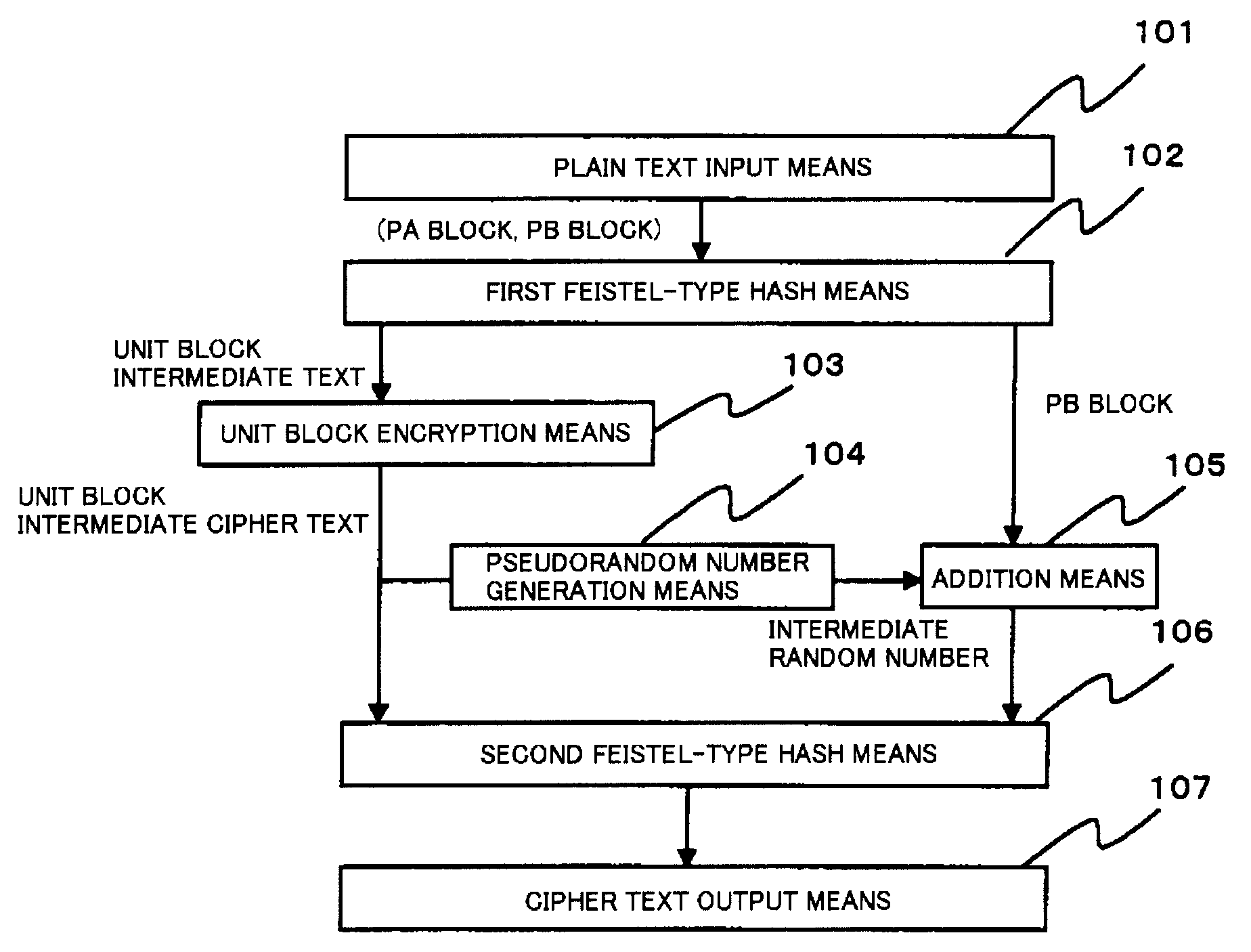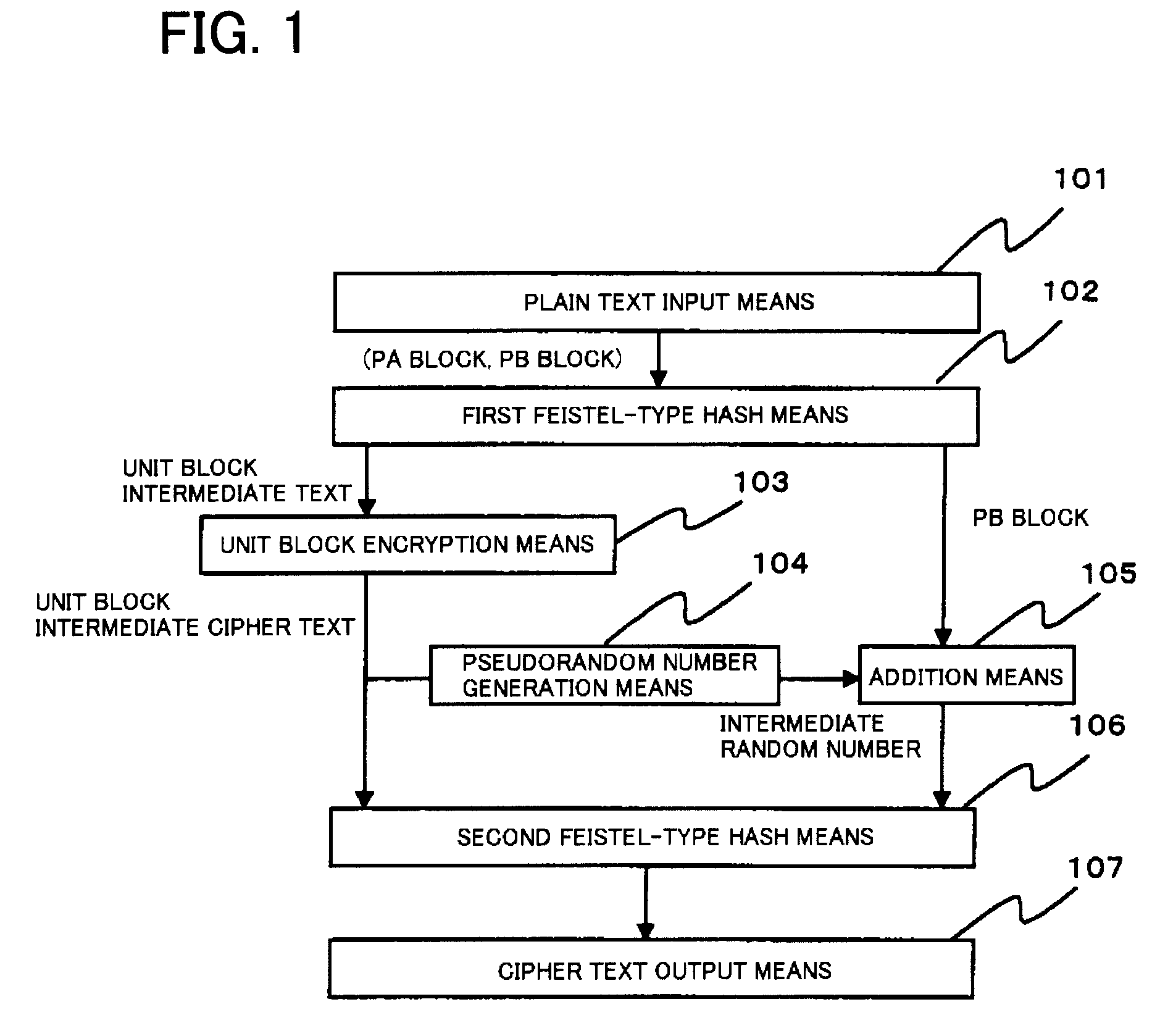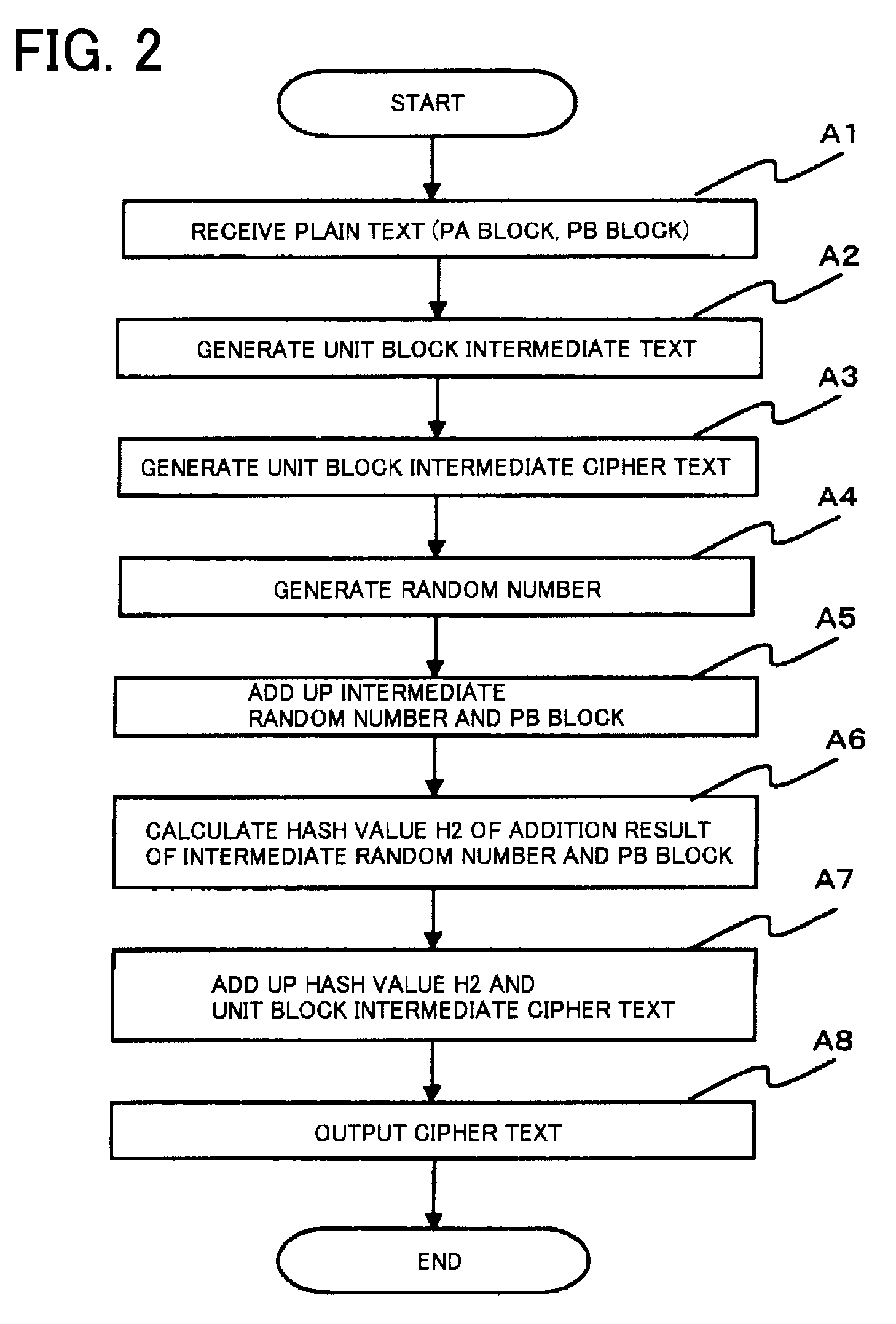Common-Key Block Encryption Device Common-Key Block Encryption Method, and Common-Key Block Encryption Program
a technology of encryption method and encryption device, which is applied in the direction of encryption apparatus with shift register/memory, digital transmission, secret communication, etc., can solve the problems of increasing the amount of memory required for encryption, increasing the calculation amount of pre-processing of key scheduling, and heavy implementation load
- Summary
- Abstract
- Description
- Claims
- Application Information
AI Technical Summary
Benefits of technology
Problems solved by technology
Method used
Image
Examples
first example
[0093]First, with reference to FIG. 1, the configuration of a common-key block encryption device in a first example will be described. FIG. 1 is a block diagram showing the configuration of the common-key block encryption device in the first example.
[0094]The common-key block encryption device in the first example comprises plain text input means (101), first Feistel-type hash means (102), unit block encryption means (103), pseudorandom number generation means (104), addition means (105), second Feistel-type hash means (106), and cipher text output means (107).
[0095]The common-key block encryption device in this example can be implemented by a CPU, a memory, and a disk. Each means of the common-key block encryption device is implemented when the CPU executes a program, stored in the disk, for executing the means.
[0096]The following describes the means configuring the common-key block encryption device.
[0097]101>
[0098]The plain text input means (101) receives a plain text to be encry...
second example
[0125]Next, a second example will be described.
[0126]A common-key block encryption device in the second example comprises plain text input means (201) that receives a plain text to be encrypted; first Feistel-type hash means (202) that divides the plain text into a PA block and a PB block, compresses the divided PB block by the hash function, adds the compressed PB block and the PA block to generate a unit block intermediate text, and outputs the generated unit block intermediate text and the PB block; unit block encryption means (203) that encrypts the unit block intermediate text to generate a unit block intermediate cipher text; pseudorandom number generation means (204) that generates an intermediate random number based on the unit block intermediate cipher text; addition means (205) that adds the intermediate random number and the PB block and outputs an addition result; and cipher text output means (206) that concatenates the addition result with the unit block intermediate ci...
third example
[0147]Next, a third example will be described.
[0148]A common-key block encryption device in the third example is characterized in that the unit block encryption means (103) of the common-key block encryption device in the first example converts a unit block intermediate text to a unit block intermediate cipher text using block encryption and in that the pseudorandom number generation means (104) concatenates the multiple-block cipher texts to generate an intermediate random number by entering the unit block intermediate cipher text into the ordered tree mode implemented by the block encryption and a simplified block encryption created by simplifying the block encryption. The following describes the common-key block encryption device in the third example. The common-key block encryption device in the third example comprises the same means as those of the common-key block encryption device in the first example shown in FIG. 1.
[0149]Next, with reference to FIG. 5, the following describ...
PUM
 Login to View More
Login to View More Abstract
Description
Claims
Application Information
 Login to View More
Login to View More - R&D
- Intellectual Property
- Life Sciences
- Materials
- Tech Scout
- Unparalleled Data Quality
- Higher Quality Content
- 60% Fewer Hallucinations
Browse by: Latest US Patents, China's latest patents, Technical Efficacy Thesaurus, Application Domain, Technology Topic, Popular Technical Reports.
© 2025 PatSnap. All rights reserved.Legal|Privacy policy|Modern Slavery Act Transparency Statement|Sitemap|About US| Contact US: help@patsnap.com



